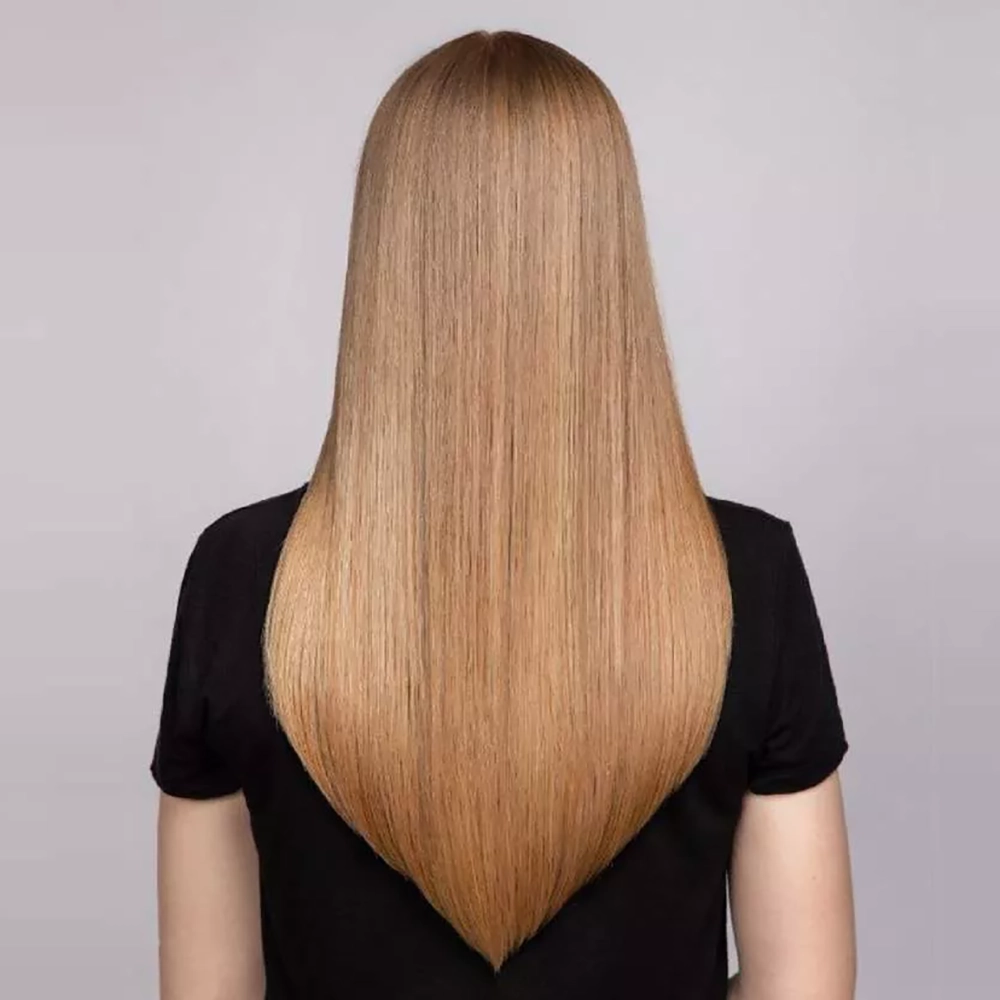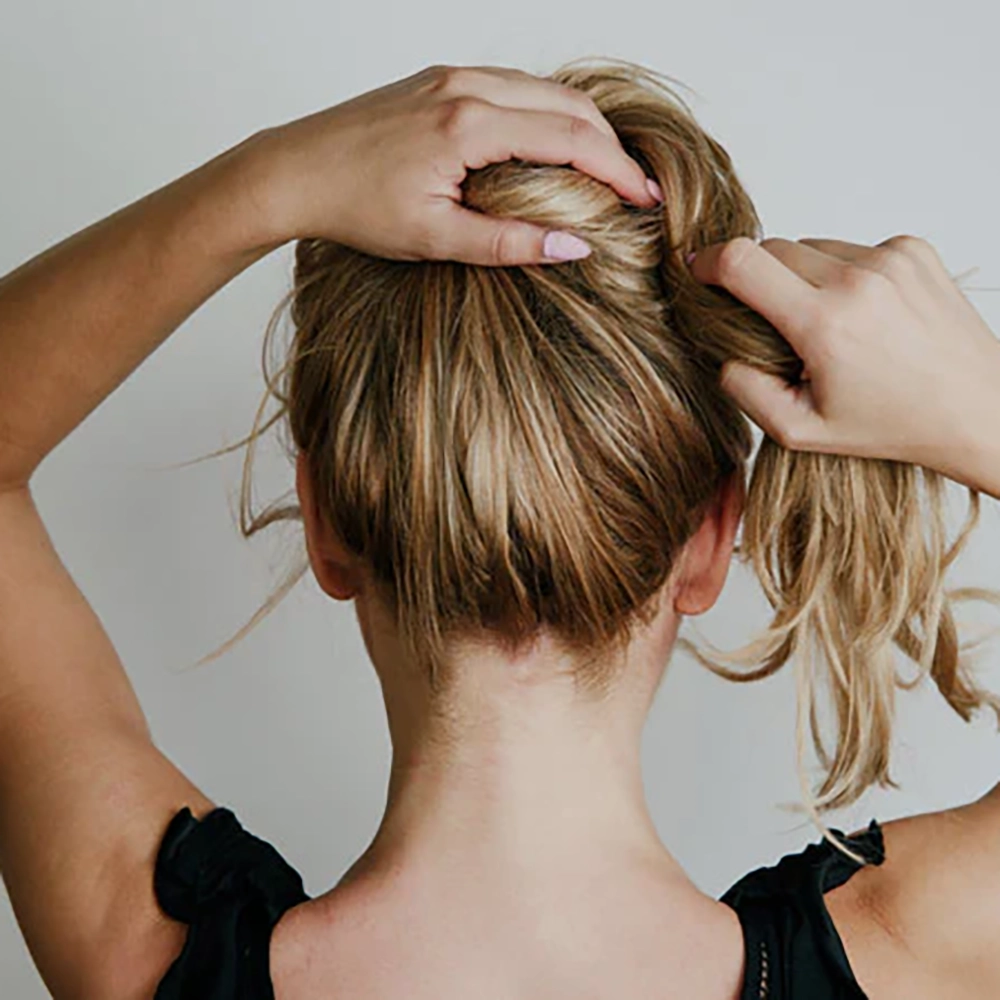Choosing the right hair oil for your needs
When it comes to choosing the right hair oil for your needs, it’s important to understand what your hair requires and the benefits that different oils can provide. With so many options available on the market, it can be overwhelming to find the perfect one for you. However, by considering your hair type, concerns, and desired results, you can select an oil that will nourish and enhance your locks.
Firstly, it’s crucial to identify your hair type. Is your hair dry, oily, or somewhere in between? Understanding this will help you determine which oils will work best for you. For dry and damaged hair, oils such as argan, coconut, and jojoba are excellent choices due to their moisturizing and reparative properties. On the other hand, if you have oily hair, lighter oils like grapeseed or almond oil can prevent excessive greasiness while providing necessary hydration.
In addition to hair type, consider the specific concerns you want to address with the oil. For example, if you’re looking to combat frizz and add shine, oils like Moroccan oil or avocado oil are known for their smoothing and gloss-enhancing effects. If you want to promote hair growth and prevent hair loss, oils such as castor oil or rosemary oil are popular options due to their stimulating properties.
Preparing your hair before applying the oil
In order to get the most out of your hair oil treatment, it is important to prepare your hair properly before applying the oil. Taking the time to properly prepare your hair will ensure that the oil is able to penetrate your strands effectively and provide maximum benefits. Here are some essential steps to take before applying hair oil:
1. Cleanse Your Hair: Start by washing your hair with a gentle shampoo to remove any dirt, product buildup, or excess oils. This will create a clean canvas for the hair oil to work its magic.
2. Towel Dry Your Hair: After shampooing, gently towel dry your hair to remove excess water. It is important not to rub your hair vigorously with the towel as this can cause damage and frizz. Instead, pat your hair dry to minimize any potential breakage.
3. Detangle Your Hair: Before applying the hair oil, make sure to detangle your hair using a wide-toothed comb or a brush specifically designed for wet hair. This will help prevent any further damage or breakage while distributing the oil evenly.
4. Divide Your Hair into Sections: To ensure that the hair oil is evenly distributed throughout your hair, it is helpful to divide your hair into sections. This can be done by creating a center part and then dividing each side into two sections. Securing each section with hair clips or hair ties will make it easier to apply the oil.
By following these simple steps, you can effectively prepare your hair before applying the oil. Taking the time to properly cleanse, towel dry, detangle, and divide your hair will allow the hair oil to work its magic and provide you with the best possible results. So, before reaching for that bottle of hair oil, make sure your hair is properly prepared!
Proper application techniques for maximum effectiveness
Proper application techniques play a crucial role in maximizing the effectiveness of hair oil treatments. Whether you are using hair oil for nourishment, growth, or to address specific hair concerns, applying it correctly ensures that you derive the most benefits from it. In this blog post, we will explore some essential tips and techniques for applying hair oil effectively.
1. Start with Clean Hair: Before applying hair oil, it is important to have clean hair. Washing your hair with a gentle shampoo and conditioner helps to remove any build-up, dirt, or excess oils that may hinder the absorption of the hair oil. Clean hair ensures that the oil penetrates the strands more easily, allowing it to work its magic.
2. Use the Right Amount: While it may seem tempting to apply a generous amount of hair oil, using too much can lead to a greasy and weighed-down look. It is important to use the appropriate quantity based on your hair length and thickness. Generally, a few drops or a small coin-sized amount should suffice. Remember, you can always add more if needed.
3. Apply to Damp Hair: For maximum effectiveness, it is recommended to apply hair oil to damp hair. After washing your hair, gently towel-dry until it is slightly damp. This helps to lock in moisture and allows the oil to spread evenly throughout your hair. Avoid applying hair oil to completely wet hair as it may dilute the oil and reduce its efficacy.
4. Massage the Scalp: When applying hair oil, take the time to massage it into your scalp using gentle circular motions. Massaging the oil into your scalp not only increases blood circulation but also helps to distribute the oil evenly. This technique ensures that your scalp receives the necessary nourishment and promotes healthy hair growth.
By following these proper application techniques, you can ensure that your hair oil treatment is effective and delivers noticeable results. Remember, consistency is key when it comes to hair oil treatments. Give yourself the time and opportunity to experience the benefits of regular and correct application. Experiment with different hair oil varieties to find the one that suits your hair needs best, and enjoy the beautiful, luscious locks you deserve!
Leaving the oil in your hair for optimal results
When it comes to hair oil treatments, many people wonder how long they should leave the oil in their hair for optimal results. The duration of time that you should leave the oil in your hair can vary depending on several factors, including hair type, oil type, and personal preference. Let’s explore the benefits of leaving the oil in your hair and some tips for achieving the best outcomes.
Benefits of Leaving Hair Oil In
Leaving hair oil in your locks for an extended period can provide numerous benefits. Firstly, it allows the oil to deeply penetrate the hair shaft and nourish the strands from within. This can help to improve hair strength, prevent damage, and enhance overall hair health. Additionally, leaving the oil in overnight or for an extended period allows for maximum absorption of the oil’s beneficial nutrients and antioxidants.
Tips for Leaving Hair Oil In
While leaving the oil in your hair can yield optimal results, it is essential to follow some tips to ensure the best outcome. Firstly, make sure to apply the oil evenly throughout your hair, paying attention to the ends and any dry or damaged areas. Use your fingertips to gently massage the oil into your scalp to stimulate blood circulation and promote better absorption. Once the oil is applied, consider covering your hair with a shower cap or towel to aid in the absorption process and prevent oil transfer onto your pillow or clothes.
Duration for Leaving Hair Oil In
The ideal duration for leaving the oil in your hair can vary based on personal preference. Some people prefer to leave it in for a few hours, while others choose to leave it overnight. If you have oily hair, it is generally recommended to leave the oil in for a shorter period to avoid greasiness. On the other hand, if you have dry or damaged hair, leaving the oil in overnight or for a full day can provide intense hydration and nourishment.
Conclusion
Leaving hair oil in your hair for optimal results can lead to healthier, stronger, and more lustrous locks. By following the tips mentioned above and determining the ideal duration based on your hair type and needs, you can maximize the benefits of your hair oil treatments. Remember to choose the right hair oil for your needs and prepare your hair properly before applying the oil to ensure the best outcomes. With proper application techniques and regular use, hair oil can become a valuable addition to your hair care routine.
Tips for washing out hair oil without leaving residue
Using hair oil can provide numerous benefits for your hair, such as adding shine, reducing frizz, and promoting growth. However, one common concern when using hair oil is the difficulty of washing it out without leaving residue behind. Residue can make your hair appear greasy and weighed down, defeating the purpose of using the oil. To ensure that you can enjoy the benefits of hair oil without any unwanted residue, here are some helpful tips:
1. Choose the right hair oil for your needs:
Not all hair oils are created equal, and choosing the right one for your hair type is crucial. Look for lightweight oils that are easily absorbed by the hair, such as argan oil or jojoba oil. These oils are less likely to leave residue compared to heavier oils like coconut oil or olive oil.
2. Properly prepare your hair before applying the oil:
Before applying hair oil, make sure your hair is clean and free from any product buildup. This will help the oil penetrate your strands more effectively and reduce the chances of residue. Give your hair a thorough shampoo and conditioning session, making sure to rinse out all the products.
3. Use proper application techniques:
When applying hair oil, less is more. Start with a small amount, depending on the length and thickness of your hair. Rub the oil between your palms and then evenly distribute it throughout your hair, focusing on the mid-lengths and ends. Avoid applying oil directly to your scalp, as this can lead to greasiness. Comb your hair to ensure even distribution.
4. Leave the oil in your hair for optimal results:
After applying the hair oil, allow it to sit for a few hours or overnight. This gives the oil enough time to deeply nourish your hair. However, be cautious not to leave it on for too long, as this can also lead to residue. It’s best to experiment with the duration that works best for your hair.
5. Wash your hair thoroughly:
When it’s time to wash out the hair oil, make sure to thoroughly rinse your hair with warm water. It’s essential to emulsify the oil with water to remove any residue. Apply a small amount of shampoo and focus on your scalp, massaging gently to remove any buildup. Rinse and repeat if necessary. Follow with conditioner, but concentrate on the mid-lengths and ends to avoid adding unnecessary oil near the roots.
6. How frequently to apply hair oil for best results:
Finding the right frequency of applying hair oil is crucial for avoiding residue. It varies depending on your hair type and needs. For most people, applying hair oil once or twice a week is sufficient. However, if you have particularly dry or damaged hair, you may benefit from more frequent applications.
7. Hydrating and conditioning your hair post-oil treatment:
After washing out the hair oil, it’s essential to hydrate and condition your hair to maintain its health and prevent dryness. Use a moisturizing conditioner and consider using a leave-in conditioner or a hair mask to provide extra nourishment. These steps will help seal in the benefits of the oil and leave your hair shiny and manageable.
In conclusion, washing out hair oil without leaving residue requires some strategy and the right techniques. By choosing a suitable hair oil, properly preparing your hair, using proper application techniques, leaving the oil in for the appropriate time, washing your hair thoroughly, and hydrating your hair post-treatment, you can enjoy the benefits of hair oil without any sticky residue, leaving your hair healthy and beautiful.
How frequently to apply hair oil for best results
When it comes to using hair oil, one of the most frequently asked questions is, “How often should I apply it?” The frequency of hair oil application depends on several factors, including your hair type, the specific oil you are using, and your personal preference. In this article, we will discuss the best practices for applying hair oil and provide you with some tips on how frequently to use it for optimal results.
Firstly, it’s important to consider your hair type. If you have dry or damaged hair, it may benefit from more regular oil application. Dry hair tends to absorb oil quickly, so applying it every other day or even daily can help nourish and moisturize your strands. On the other hand, if you have oily hair, you may want to limit the frequency of oil application to avoid weighing down your hair or making it look greasy. Two to three times a week should be sufficient for oily hair types.
Secondly, the type of hair oil you are using also plays a role in determining how often you should apply it. Some oils, like argan oil or jojoba oil, are lightweight and suitable for daily use. These oils are easily absorbed by the hair without leaving any greasy residue. However, heavier oils like castor oil or coconut oil may require less frequent application, as they can be more difficult to wash out and may leave a greasy residue if used too often. Using these heavier oils once or twice a week should be enough to reap their benefits.
Hydrating and conditioning your hair post-oil treatment
After applying hair oil, it is important to follow up with proper hydration and conditioning to ensure the best results for your hair. While hair oil can add moisture and nourishment, it is essential to complete your hair care routine with hydrating and conditioning products. These products not only help seal in the benefits of the oil but also provide additional moisture and nutrients to keep your hair healthy and lustrous.
One effective way to hydrate and condition your hair after an oil treatment is to use a hydrating hair mask. Hair masks are formulated with deeply nourishing ingredients that penetrate the hair shaft, providing intense hydration and repairing damaged strands. Look for masks that contain ingredients such as avocado oil, argan oil, shea butter, or coconut oil, as these are known for their moisturizing properties. Apply the mask generously to your hair, focusing on the mid-lengths and ends, and leave it on for the recommended amount of time.
In addition to hair masks, using a leave-in conditioner can help maintain the moisture balance in your hair post-oil treatment. Leave-in conditioners are lightweight formulas that can be applied to damp or dry hair without rinsing. They provide an extra layer of moisture and protection, helping to prevent dryness and frizz. Look for leave-in conditioners that are specifically designed for your hair type and concerns, whether that be for curly hair, damaged hair, or color-treated hair.
Lastly, don’t forget to incorporate a regular deep conditioning treatment into your hair care routine. Deep conditioners are designed to penetrate the hair shaft and provide long-lasting hydration and nourishment. They are typically more concentrated than regular conditioners, containing higher levels of moisturizing ingredients. Use a deep conditioning treatment once or twice a week to revitalize your hair and keep it in optimal condition. You can either opt for store-bought deep conditioners or make your own at home using natural ingredients like honey, olive oil, or yogurt.
By following these hydration and conditioning tips post-oil treatment, you can ensure that your hair remains healthy, hydrated, and full of life. Remember to choose products that suit your hair’s specific needs and concerns, and always prioritize quality over quantity when it comes to hair care. With the right combination of hair oil, hydrating masks, leave-in conditioners, and deep conditioners, you can achieve the luscious and nourished locks you desire.


























